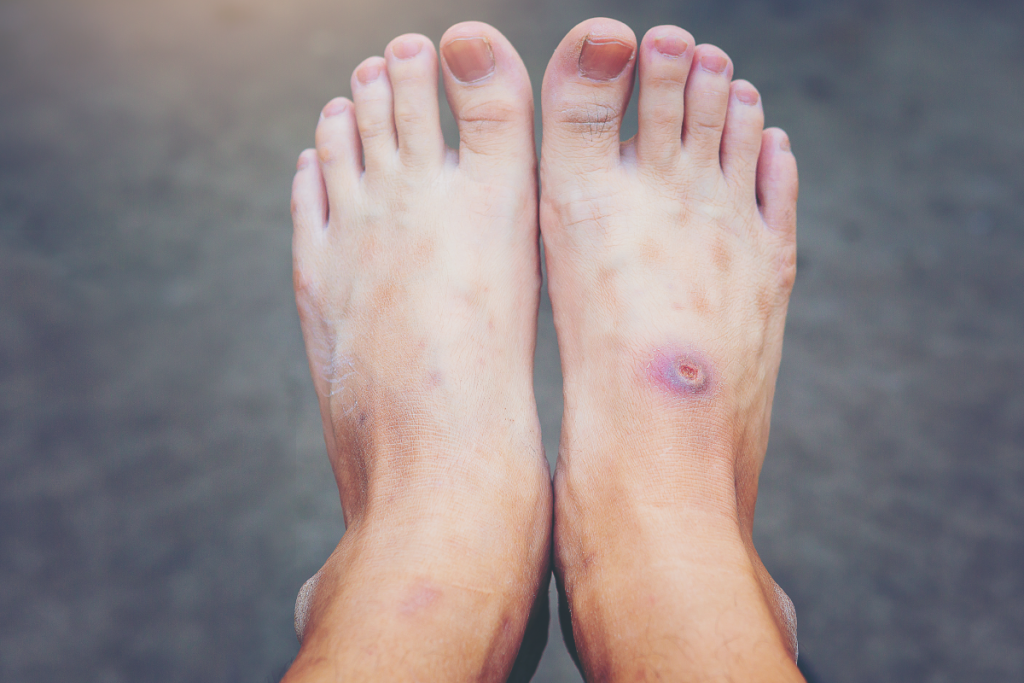Navigating the Stages of Diabetic Foot Ulcers: A Comprehensive Guide to Effective Care
Dealing with Diabetic Foot Ulcers can be quite intricate and requires a deep understanding of how they evolve through different stages. Every stage comes with its own set of challenges, highlighting the significance of taking a systematic and multidisciplinary approach.

In this blog, we will explore each stage, highlighting the important features and necessary interventions that are vital for ensuring effective diabetic foot care.

Stage 0 - Normal Foot
During this initial stage, it is crucial to emphasize the significance of taking preventive measures for the diabetic foot.
Now, it's absolutely essential to emphasize the importance of wearing the right shoes such as therapeutic shoes or diabetic shoes, and educating patients on how to take care of their feet and choose the right footwear.
With a keen emphasis on prevention during this stage, the aim is to avoid the formation of ulcers, establishing a solid basis for successful long-term management.
Stage 1 - High-Risk Foot
In stage 2, the foot becomes more susceptible to ulceration due to various factors, including neuropathy, ischemia, deformity, swelling, and callus formation. Specialized footwear is essential for accommodating deformities, and it's crucial to take a proactive approach in treating calluses, especially in neuropathic feet.
In this crucial stage, it is essential to provide early intervention and thorough care to minimize the potential risks of developing ulcers.
Stage 2- Ulcerated Foot
In stage 3, ulcers become apparent and are categorized as either neuropathic or neuroischemic.
Neuropathic ulcers tend to develop on the bottom of the foot and toes, usually due to untreated calluses and increased pressure on the sole.
On the other hand, neuroischaemic ulcers often occur along the edges of the foot, usually as a result of trauma or wearing ill-fitting shoes. In managing neuroischaemic ulcers, it is crucial to prioritise pressure relief, sharp debridement, dressings, and potentially vascular interventions.
This stage requires a sense of urgency and a proactive approach.
Stage 3 - Infected Foot
In stage 4, attention turns to the importance of microbiological control due to the increased risk of infections.
When it comes to severe infections, it's crucial to prioritize intravenous antibacterial therapy. Additionally, it's important to promptly assess the situation to determine if surgical drainage and debridement are required.
Infections can become more serious if not treated promptly, highlighting the importance of timely and specific interventions to prevent further complications.
Stage 4 - Necrotic Foot

Stage 5 of the condition involves necrosis, which can be categorized as either wet or dry.
When dealing with neuropathic feet with wet necrosis, it is absolutely crucial to administer intravenous antibacterial and perform surgical debridement. In certain cases, vascular reconstruction may be necessary for neuroischemic feet with wet necrosis.
This stage highlights the seriousness of the condition and emphasizes the importance of targeted interventions designed to address the unique characteristics of necrosis, with the goal of preserving as much healthy tissue as possible.
With a focus on education, early detection, and proactive management, the goal is to prevent the development of serious complications like infections and necrosis.
In order to effectively reduce the occurrence of major amputations in diabetic patients, it is crucial for healthcare professionals to have a comprehensive understanding of the different stages involved.
This knowledge enables them to deliver timely and efficient care, ultimately leading to better outcomes for patients.
Look through our most-sought-after styles to get the right pair for you today with DiabeticShoe.in. Check out our extensive collection of shoes to find the best shoes for your feet.








